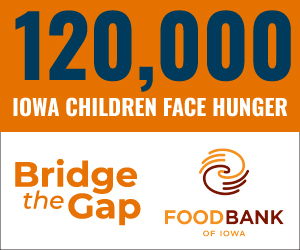Packaging Corp. stock has been unpredictable

.bodytext {float: left; } .floatimg-left-hort { float:left; margin-top:10px; margin-right: 10px; width:300px; clear:left;} .floatimg-left-caption-hort { float:left; margin-bottom:10px; width:300px; margin-right:10px; clear:left;} .floatimg-left-vert { float:left; margin-top:10px; margin-right:15px; width:200px;} .floatimg-left-caption-vert { float:left; margin-right:10px; margin-bottom:10px; font-size: 10px; width:200px;} .floatimg-right-hort { float:right; margin-top:10px; margin-left:10px; margin-bottom:10px; width: 300px;} .floatimg-right-caption-hort { float:left; margin-right:10px; margin-bottom:10px; width: 300px; font-size: 10px; } .floatimg-right-vert { float:right; margin-top:10px; margin-left:10px; margin-bottom:10px; width: 200px;} .floatimg-right-caption-vert { float:left; margin-right:10px; margin-bottom:10px; width: 200px; font-size: 10px; } .floatimgright-sidebar { float:right; margin-top:10px; margin-left:10px; margin-bottom:10px; width: 200px; border-top-style: double; border-top-color: black; border-bottom-style: double; border-bottom-color: black;} .floatimgright-sidebar p { line-height: 115%; text-indent: 10px; } .floatimgright-sidebar h4 { font-variant:small-caps; } .pullquote { float:right; margin-top:10px; margin-left:10px; margin-bottom:10px; width: 150px; background: url(http://www.dmbusinessdaily.com/DAILY/editorial/extras/closequote.gif) no-repeat bottom right !important ; line-height: 150%; font-size: 125%; border-top: 1px solid; border-bottom: 1px solid;} .floatvidleft { float:left; margin-bottom:10px; width:325px; margin-right:10px; clear:left;} .floatvidright { float:right; margin-bottom:10px; width:325px; margin-right:10px; clear:left;} Dear Mr. Berko:
Please tell me what you know about Packaging Corp., which trades at $30.15 a share. I’ve looked at the company, and it seems to be a value buy with good earnings and a consistent $1 dividend. I’d like to buy 400 shares if you give me the go-ahead. If you agree, I’ll buy 400 shares – 200 for my Individual Retirement Account and 200 for my wife’s IRA.
C.L., Boca Raton, Fla.
Dear C.L.:
Packaging Corporation of America (PKG-$30.15) was the result of an initial public offering at $12 a share. At 10:33 a.m., Jan. 28, 2000, PKG debuted on the New York Stock Exchange and officially became a public corporation.
But the IPO of the nation’s sixth-largest producer of containerboard and corrugated products wasn’t received with the plaudits, panache and excitement common to most new issues. Annual revenues immediately after its IPO were just under $2 billion, net profit margins were a healthy 7.2 percent, operating margins were 25.6 percent and return on shareholders’ equity was 20.7 percent. Not shabby, and I reckoned that PKG looked like one of those undiscovered jewels every money manager cherishes.
So I bought 300 shares at $12.25; immediately afterward, the luke-cold IPO shares quickly crashed to $9 plus loose change. So I sold my 300 shares about two weeks later (right at the bottom) and ignominiously took a $1,000 loss.
During the years that followed, revenues fell, earnings crashed, capital spending declined, book value remained flat, operating margins and return on shareholders’ equity plunged and cash flow tumbled. But much to my chagrin, PKG rose steadily to $25 a few years later and peaked at $31 last year.
Well, all those key numbers (cash flow, net profit margins, etc.) now appear to be turning around. Earnings for this year are expected to come in at $1.33 per share, and next year the Street’s looking at $1.56. Net profit margins, shareholder’s equity and book value all seem to be improving, and the $1 dividend, which yields 3.3 percent, may be increased to $1.10 in the next quarter.
In fact, Value Line believes that PKG is poised to “outperform the broader markets over the next six to 12 months.” And the estimable Value Line believes PKG has expenses under tight control, expects revenues to top $2.3 billion in 2008 and possibly $2.6 billion by 2011, and projects a stock price of $40.
The company has maintained its $1 dividend, suggesting that management has maintained its confidence in its business and its commitment to shareholder value. Operational flexibility allows PKG to keep fuel cost low by using bark and coal (two of the lowest-cost fuels) for about 75 percent of its purchased fuel needs. Wise capital investments seem to have given PKG enormous fiber-source flexibility, reducing its exposure to pricing volatility. Meanwhile, long-term debt has decreased by 20 percent while working capital has almost doubled in the past six years. And the company seems to have a high level of vertical integration, which helps support its low-cost mill system. Frankly, the company looks like a fairly good, conservative, long-term investment for patient investors.
Goldman Sachs gives PKG a converted five-star ranking and Citigroup Inc. rates the stock as a “buy.” Morningstar thinks PKG could trade at $30 this year, and MSN Stock Scouter Rating ranks PKG at an 8 out of 10.
That’s cool beans, but I’ve got this “gnaw” in the back of my head that says, “It just doesn’t feel right.” I think PKG may be fully priced at current levels. I wouldn’t buy the stock, but if you must, then please consider purchasing 200 shares instead of 400.






